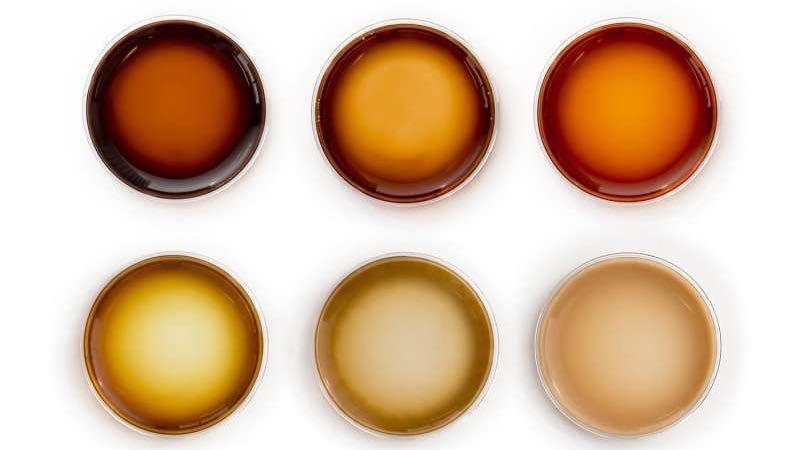The natural sunscreen of the future
Polymeric pigments were produced by guided oxidation of peptide assemblies.
Whether you fry in the sun or hardly seem to burn at all depends on something you can’t change: the amount of pigment, or melanin, in your skin. But what if you could add melanin to sunscreens for better sun protection?
In the future, we may come close: Researchers reporting in Science have developed a melaninlike substance that can be tuned to dark and light shades, corresponding with different degrees of protection against the sun’s ultraviolet rays.
“It’s not strictly synthetic melanin, I would say, because it has some chemical signatures that are slightly different,” says study author Rein Ulijn, a professor of chemistry and the director of the Nanoscience Initiative at CUNY’s Advanced Science Research Center. “So the purist would say it’s not synthetic melanin. However, it’s potentially even more exciting because it is highly tunable, and we can control the properties of this synthetic melanin mimic.”
Melanin’s powerful properties have long been known to researchers like Ulijn and his team. “It provides UV protection, it provides free-radical scavenging, and it can also have other properties like mechanical properties, and so it’s a protective layer found in many species,” he says.
But the pigment has been notoriously difficult to synthesize in the lab. Ulijn explains that it’s produced when tyrosine, a common amino acid, is oxidized and then polymerized, forming long, complex chains of molecules. In the body, he says, the polymerization process is tightly regulated. “So if you take tyrosine and you oxidize it in the lab, you can make black insoluble polymers, but they are not very useful because they don’t have tunable and precise properties.”
But in their melaninlike substance, researchers have developed a way to fine-tune the process to create a range of colors. “So the tunability relates to how we pre-organize the tyrosine molecules,” Ulijn says. In a CUNY press release, he detailed the team’s method.
"We took advantage of simple versions of proteins — tripeptides, consisting of just three amino acids — to produce a range of molecular architectures with precisely controlled levels of order and disorder," he explained. "We were amazed to see that, upon oxidation of these peptide structures, polymeric pigments with a range of colors, from light beige to deep brown, were formed."
Ulijn and his team hope that the synthetic melanin could eventually be added to lotions and cosmetics as a sunscreen, replacing existing SPF (sun protection factor) ingredients. The new substance doesn’t yet have FDA approval — “it’s early days,” Ulijn says — but he’s optimistic about its chances.
“All the ingredients that we use to make these materials are themselves derived from amino acids, and they have good status at the FDA. They have so-called GRAS status,” Ulijn says — meaning the ingredients are generally recognized as safe.
What’s more, synthetic melanin could have applications reaching far beyond sunscreen: As it turns out, some of the new polymers are capable of storing electric charges. “We’re working with a collaborator at Carnegie Mellon University, Christopher Bettinger, who’s looking at batterylike applications of these materials,” Ulijn says.
“So there’s no shortage of exciting things that can be done, now that we can tune the formation of these materials.”
This article is based on an interview that aired on PRI's Science Friday with Ira Flatow.
